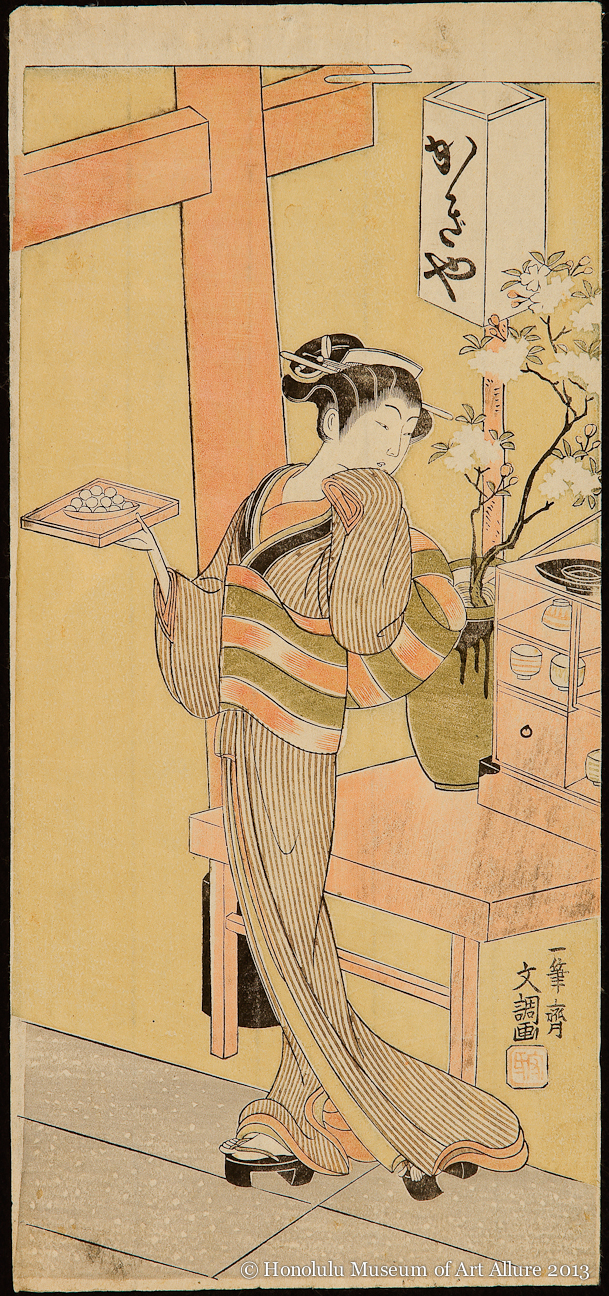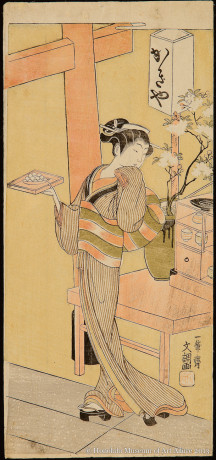Ippitsusai Bunchō (active c. 1755-1790)
Osen of the Kagiya Teahouse
Japan, Edo period, c. 1772-1781
Woodblock print; ink and color on paper
Gift of James A. Michener, 1991
Honolulu Museum of Art
(24466)
In addition to courtesans, many ukiyo-e artists venerated teahouse waitresses as special beauties, of whom none were more renowned than Osen. This was due in no small part to the fact that Osen was one of Harunobu’s favorite subjects; depictions of her by Bunchō, who specialized in actor portraits, are comparatively rare, but this exhibition is fortunate to include two examples.
That waitresses such as Osen were featured in ukiyo-e is an important reminder that the courtesans of the pleasure quarters did not have a monopoly on celebrity status as icons of beauty. However, it is also significant to note that teahouses and brothels were inextricably linked. According to leading Yoshiwara scholar Cecelia Segawa Siegle, as early as the mid-17th century, teahouses became centers of unlicensed prostitution throughout the city of Edo, and in the 1660s the government forcibly relocated over 70 teahouses and more than 500 women to the Yoshiwara.
Waitresses continued to be associated with prostitution, to the extent that over time teahouse terminology came to be used to designate the highest ranks of Yoshiwara courtesans. In addition, teahouses served as intermediaries between courtesans and their clients, and eventually an introduction from a teahouse was required before one could obtain a meeting with the most coveted courtesans.
View info on museum database (enabled through support by the Robert F. Lange Foundation)


